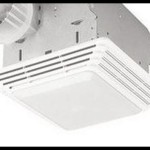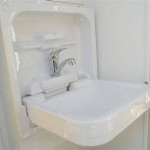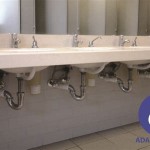How Much Does A School Bathroom Sink Cost?
Determining the cost of a school bathroom sink is a complex undertaking, significantly influenced by a multitude of factors. These factors range from the material composition and size of the sink to the installation requirements and any added features desired. Understanding these elements is crucial for budgeting and planning purposes when building a new school or renovating existing bathroom facilities.
Unlike residential sinks, school bathroom sinks often face higher usage demands and exposure to potential vandalism. Thus, durability and resistance to wear and tear take precedence in the selection process. This necessitates investing in higher-quality materials and robust designs, which naturally impacts the overall cost.
This article will delve into the different elements affecting the price of a school bathroom sink, explore various material options, and consider the labor and installation costs associated with these fixtures. Providing a comprehensive overview of these aspects enables school administrators and project managers to make informed decisions and accurately estimate the expenses involved in providing functional and hygienic bathroom facilities for students and staff.
Material Type and Its Impact on Sink Costs
The material from which a school bathroom sink is constructed is a primary driver of its cost. Different materials offer varying levels of durability, resistance to damage, and aesthetic appeal, directly influencing their price points.
Stainless Steel: Stainless steel is a popular choice for school bathrooms due to its exceptional durability, resistance to corrosion, and hygienic properties. Its non-porous surface inhibits bacterial growth, making it easy to clean and maintain. Stainless steel sinks are also highly resistant to staining and impact damage, making them well-suited for high-traffic environments. The cost of stainless steel sinks can vary depending on the gauge (thickness) of the steel and the overall size of the sink. Thicker gauges of stainless steel provide greater durability and resistance to dents, but they also come with a higher price tag. A basic stainless steel single-basin sink suitable for a school bathroom might range from $150 to $400. Larger multi-basin units can easily exceed $1000.
Vitreous China: Vitreous china is a ceramic material coated with enamel, providing a smooth, glossy surface. It is a commonly used material for residential bathroom sinks and can be found in some school bathrooms, although it is less common than stainless steel. Vitreous china sinks offer a more aesthetically pleasing appearance and are available in a wide range of styles and colors. However, they are more susceptible to chipping, cracking, and staining compared to stainless steel. The cost of a vitreous china sink for a school bathroom typically ranges from $100 to $300, depending on the size, design, and manufacturer.
Solid Surface Materials: Solid surface materials, such as acrylic or polyester resins combined with mineral fillers, offer a blend of durability and design flexibility. These materials are non-porous, resistant to stains and scratches, and can be seamlessly molded into various shapes and sizes. Solid surface sinks are often specified in schools where a more modern or upscale aesthetic is desired. However, they tend to be more expensive than stainless steel or vitreous china options. A solid surface sink suitable for a school bathroom could cost between $300 and $600 or more, depending on the brand and features.
Composite Materials: Composite materials, like quartz composite, are another option for school bathroom sinks. These materials are made by combining natural quartz with resins, resulting in a durable and aesthetically pleasing product. Quartz composite sinks are resistant to scratches, stains, and heat, making them a good choice for high-use environments. However, they are also generally more expensive than other material options. The price of a quartz composite sink for a school bathroom can range from $400 to $800 or more, depending on the size and design.
When choosing a material for school bathroom sinks, it's vital to consider the balance between cost, durability, aesthetic appeal, and ease of maintenance. While stainless steel offers exceptional durability and hygiene, other materials might be preferred for their design flexibility or visual appeal in certain school settings.
Sink Size, Configuration, and Features
Beyond the material, the size, configuration (number of basins), and added features of a school bathroom sink significantly influence its cost. Larger sinks, multi-basin units, and sinks with specialized features will naturally command a higher price.
Single vs. Multi-Basin Sinks: Single-basin sinks are the simplest and most economical option for school bathrooms. However, in high-traffic areas, multi-basin sinks are often preferred to accommodate more students or staff simultaneously. Multi-basin sinks can have two, three, or even more basins integrated into a single unit. The cost of a multi-basin sink is substantially higher than that of a single-basin sink due to the increased material and manufacturing complexity. A two-basin stainless steel sink, for example, might cost twice as much as a comparable single-basin unit, ranging from $400 to $800 or more.
Sink Size and Dimensions: The physical dimensions of the sink also play a role in its price. Larger sinks require more material and may be more complex to manufacture, resulting in higher costs. The width, depth, and height of the sink should be carefully considered to ensure it meets the needs of the users and fits appropriately within the available bathroom space. Standard-sized sinks are generally more affordable than custom-sized or oversized sinks.
Faucet Type and Features: The choice of faucets can significantly impact the overall cost of the sink installation. Options range from basic manual faucets to touchless automatic faucets. Touchless faucets are becoming increasingly popular in schools due to their hygienic benefits and water-saving capabilities. However, they are considerably more expensive than manual faucets, often costing two to three times as much. The cost of a manual faucet for a school bathroom sink might range from $50 to $150, while a touchless faucet could cost between $150 and $400 or more. Features like temperature control, vandal-resistant designs, and automatic shut-off mechanisms can further increase the price.
Soap Dispensers and Hand Dryers: Integrating soap dispensers and hand dryers into the sink unit can enhance convenience and hygiene in school bathrooms. Options include built-in soap dispensers and surface-mounted or recessed hand dryers. Built-in soap dispensers can add $50 to $100 to the cost of the sink, while hand dryers can range from $200 to $500 or more, depending on the type and features. Choosing energy-efficient hand dryers can help reduce operating costs over the long term.
Compliance with Accessibility Standards: School bathrooms must comply with accessibility standards, such as the Americans with Disabilities Act (ADA). ADA-compliant sinks must meet specific height requirements, provide adequate knee clearance, and have accessible faucet controls. ADA-compliant sinks may cost slightly more than standard sinks due to the additional design and manufacturing considerations. It is crucial to ensure that the chosen sink meets all applicable accessibility requirements to avoid potential legal issues and ensure inclusivity for all users.
Careful consideration of the desired size, configuration, and features of school bathroom sinks is essential for balancing functionality, budget constraints, and compliance requirements. Choosing the right combination of these elements can lead to a cost-effective and user-friendly bathroom design.
Installation and Labor Costs
The cost of a school bathroom sink extends beyond the price of the fixture itself. Installation and labor costs represent a significant portion of the overall expense and should be carefully factored into the budget.
Plumbing Modifications: Installing a new sink often requires modifications to the existing plumbing infrastructure, including water supply lines and drainpipes. The extent of these modifications will depend on the location of the new sink, the existing plumbing layout, and the type of sink being installed. If significant plumbing modifications are required, the labor costs can increase substantially. For example, relocating water supply lines or drainpipes can add several hundred dollars to the installation cost. Obtaining accurate quotes from qualified plumbers is essential to avoid unexpected expenses.
Demolition and Removal of Existing Sinks: In renovation projects, the existing sinks must be removed before the new sinks can be installed. The cost of demolition and removal will depend on the complexity of the removal process and the disposal fees for the old sinks. If the existing sinks are heavily damaged or difficult to access, the labor costs for demolition and removal may be higher. It's important to factor in disposal fees, as some materials, like certain types of ceramics, may require specialized disposal methods.
Sink Installation Labor: The labor cost for installing a school bathroom sink typically ranges from $150 to $500, depending on the complexity of the installation and the hourly rate of the plumber. Factors that can influence the labor cost include the type of sink, the location of the sink, and the accessibility of the plumbing connections. Installing a multi-basin sink or a sink with specialized features may require more time and expertise, resulting in higher labor costs. Obtaining multiple quotes from licensed plumbers and verifying their qualifications and insurance coverage is recommended.
Additional Costs: Other potential costs associated with sink installation include permits, inspections, and the cost of additional materials, such as sealant, pipes, and fittings. Depending on local regulations, a plumbing permit may be required for sink installation. The cost of a plumbing permit can vary depending on the location and the scope of the project. An inspection may also be required to ensure that the installation meets all applicable codes and standards. It's prudent to allocate a contingency fund to cover any unforeseen expenses that may arise during the installation process.
Minimizing Installation Costs: Several strategies can help minimize installation costs. These include carefully planning the sink location to minimize plumbing modifications, choosing sinks that are easy to install, and obtaining multiple quotes from qualified plumbers. Scheduling the installation during off-peak hours or slower periods for plumbing contractors can sometimes result in lower labor rates. Communicating clearly with the plumber about the project requirements and budget constraints is also crucial for ensuring a smooth and cost-effective installation process.
By carefully considering the installation and labor costs associated with school bathroom sinks, school administrators and project managers can develop a more accurate budget and avoid unexpected expenses.

Ovs Whole Hospital School Rectangular Bathroom Sinks S Ceramic Sink Bowls Washbasin China Sanitary Wash Basin Ware Kitchen Countertop Made In Com

Ovs Whole Hospital School Rectangular Bathroom Sinks S Ceramic Sink Bowls Washbasin China Sanitary Wash Basin Ware Kitchen Countertop Made In Com

School Washbasin Petite Affaire D Eau

Commercial Bathroom Sinks Wall Mount Sink For Hand Washing Sloan

School Small Size Blue Wash Hand Sink Good Counter Basin Models China Made In Com

Buy Whole China Small Size Save Space School Delicate Appearance Bathroom Ceramic Table Top Wash Basin Design Sinks At Usd 41 Global Sources

Bathroom Sink Guide Lowe S

Commercial Trough Bathroom Sinks Custom And Standard By Eko Living Elements Llc

Commercial Bathroom Sinks Wall Mount Sink For Hand Washing Sloan

Bathroom Sinks The Home Depot
Related Posts







